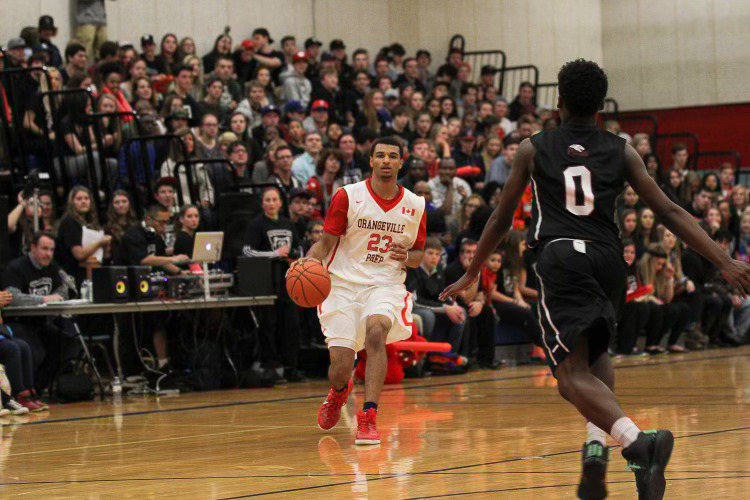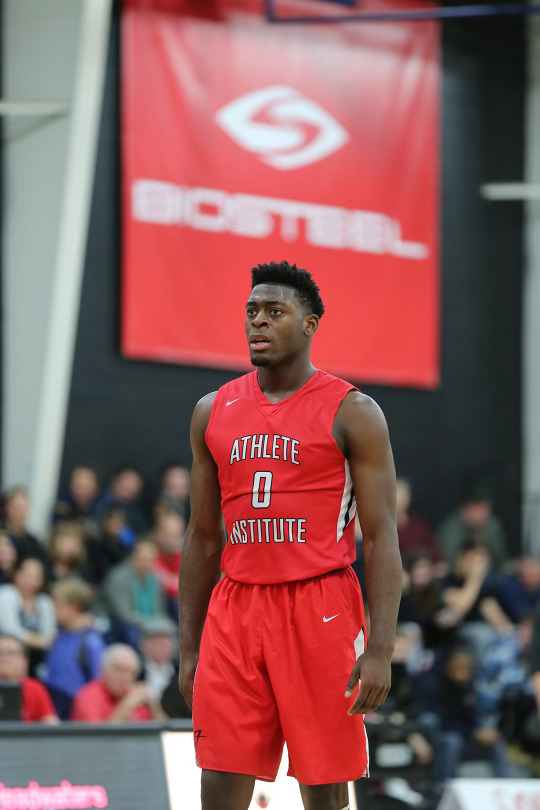As Canada challenges for Olympic supremacy, the system that produced many of its top talents is changing. Is Toronto’s storied public-school basketball system on its way out?This week, the Canadian senior men’s basketball team will start its push for an Olympic medal in France. The best team the country has ever fielded, it’s led by such stars as Shai Gilgeous-Alexander, Jamal Murray, and RJ Barrett.
The team’s rise reflects unprecedented growth in Canadian high-school basketball, especially in Ontario, where eight of the 12 players grew up competing against each other. But the public school system where Gilgeous-Alexander, Murray, Dillon Brooks, Nickeil Alexander-Walker, Andrew Nembhard and many other Canadian ballers got their start has undergone a significant change in recent years. And as Canada challenges for Olympic supremacy, young athletes in the GTA no longer seek out public schools, which once birthed a burgeoning basketball culture. Instead, they aim for one of the dozens of elite private preparatory institutions that have cropped up across the country, including more than 50 in the Greater Toronto Area.While these schools can boast access to the best coaches, facilities, and training methods, some say they have also created an uneven playing field. Parents face pressure to pay thousands of dollars a year in fees without a promise of future scholarships or earnings — eroding the GTA’s storied public-school basketball scene.
“The kids are desperate these days for Division 1,” says Canadian basketball scout Wes Brown says, referring to the highest level of college basketball in the United States. “And everyone’s selling the dream.”
Basketball has been among the most popular high-school sports in the GTA since the 1980s, when immigrants from the Caribbean, Africa, and basketball-loving Asian and Balkan countries came to Toronto and filled its public schools. Runnymede Collegiate Institute, Eastern Commerce High, Bathurst Heights Secondary, Father Henry Carr, Vaughan Secondary School, Oakwood Collegiate and more have all taken turns as powerhouse programs — fighting for city dominance while graduating talented basketball players whose competitive spirit was forged through fierce rivalries with neighbouring schools. Several of Canada’s most well-known basketball stars came from this system, including Bo Pelech, Norman Clarke, Jamaal Magloire, Phil Dixon, Rowan Barrett, and Andrew Wiggins

NBA star Jamal Murray played high-school basketball in Orangeville. (Courtesy Athlete Institute)
Oakwood, the sprawling yellow-brick school on St. Clair Avenue West, in Toronto, has been at the forefront of this movement since the beginning. From the famous Oakwood community pickup runs in the 1980s and ’90s to the senior team’s dominance of city and provincial championships, Oakwood’s blue and brown gym has seen its fair share of players who have gone on to reach the highest levels of basketball. Toronto Raptors assistant coach Jama Mahlalela went to Oakwood, as did broadcasters Paul and Mark Jones. Nathaniel Mitchell, the assistant coach of the Canadian men’s basketball team, is an Oakwood graduate, as was the late Greg Francis, a former player and youth development coach.
Joshua Primo, a high NBA draft pick in 2021, attended Oakwood for a year, as did several high-level players representing the NCAA, U Sports, and top professional leagues throughout the world — Calvin Epistola in South Korea, Tyrell Bellot-Green in the United Kingdom, and Brody Clarke and Kalif Young in the Canadian Elite Basketball League, to name a few.
“It was a pretty big factor in coming here,” fifth-year Oakwood guard Jermaine Harvey-Hyatt says about the basketball program, which advanced to 13 straight provincial championships between 2006 and 2018. “I knew about it just because of how much success Oakwood had in the past.”
Harvey-Hyatt was recruited by current head coach Anthony Miller. Even though he doesn’t live in the neighbourhood, Harvey-Hyatt applied for optional attendance and ended up staying at Oakwood for all five years, forgoing prep-school opportunities for a more traditional high-school experience.
He parlayed his success into an athletic scholarship at York University; three of his teammates will also be playing college or U SPORTS basketball next year.
“Everyone told me, ‘Yo, you shouldn’t stay at Oakwood. It’s not good. There’s no exposure.’ And I said, ‘No, at the end of the day, if nothing comes out of Oakwood, that’s on me,’” Harvey-Hyatt says.
“Everyone has that thing in the back of their mind that just because we’re a [public] high school that we’re not good enough. But at the end of the day, it’s just basketball. It doesn’t matter what school you’re at.”
But many students now feel they are at a disadvantage if they don’t play for a prep program. And, as a result, public-school basketball programs like Oakwood’s are fading from relevance.
This shift began in 2012 with the formation of Orangeville Prep. Orangeville native Jesse Tipping created the program — based out of his private basketball facility, Athlete Institute, and Orangeville District Secondary School — as he believed the Canadian school system wasn’t geared toward developing high-level players, meaning the top athletes routinely moved to the U.S. for at least part of high school.
Orangeville Prep took off when current Denver Nuggets superstar Jamal Murray joined in 2013. Both Murray and his teammate Thon Maker were selected early in the 2016 NBA Draft, kicking off a prodigious run of success for alumni. (A similar phenomenon occurred on the girls’ side with Shayeann Day-Wilson and Aaliyah Edwards at Crestwood Prep.)
Tipping then created the Ontario Scholastic Basketball Association (OSBA), a league that allowed prep schools to recruit the best talent from throughout Canada to compete against one another. These schools offer athletes elite competition, resources, facilities, coaching and, most important, regular trips to the U.S. for tournaments. Their athletes are exposed to NCAA coaches, upping their chances of getting NCAA scholarships. In fact, Tipping has said that when he started the program, “70 per cent of the Canadian high-school basketball players were getting scholarships out of American prep schools. Now that’s completely switched.”
Unlike in public schools, where students might play several sports throughout the year, prep schools such as Orangeville focus on early specialization. Students at Orangeville wake up at 6 or 7 a .m. for workouts with a strength coach before taking a bus to school. Afterwards, they practice for a few hours, study hall, and then sometimes return for a second workout at night.
However, not all prep schools are created equal — and many complain that the lower-level programs simply don’t offer the academics or resources to match the prohibitive cost. In fact, some of them rely on online learning or only fulfill NCAA core course requirements instead of Canadian University standards. Still, they can leave parents paying anywhere from $3,000 to $33,500 a year in fees, assuming the athletes aren’t on a scholarship.

Lu Dort, a member of the Canadian men's Olympic basketball team, played for the Athlete Institute. (Courtesy Athlete Institute)
“There’s too many prep schools, and a lot of them are very weak,” Brown says. “We don’t have enough talent to load more than 10 prep schools with players. So some of them are money grabs.”
These problems were exacerbated during the COVID-19 pandemic. The high-school basketball season was shut down and only select elite amateur sports — including the OSBA —were allowed to continue in Ontario. That pushed more kids towards prep schools and helped spawn new teams and leagues.
“I don’t think that having 50-odd prep schools — or what people are calling prep schools — is advantageous,” Tipping says. “If you are from an area, like Oakwood or in Toronto, where your high school can have a catchment area that has some talented players and great coaches, well, you should play on your high-school team.”
“I think as much as the prep scene has kind of taken over, there is a much bigger role for traditional high schools to play nowadays than they currently are.”
The exodus of students to prep schools, though, means college scouts are increasingly uninterested in public schools; that fuels a larger exodus. This is frustrating for coaches like Miller, who argue there is more than one way for a kid to have success. “There is a notion out there that you are not a good basketball player if you’re still at your high school. I have to continually reassure the kids that play for me that they’re actually really good basketball players and that they can actually play at the university and college level,” says Miller, who has coached at Oakwood since 2004.
“Because some kid somewhere is going to go home and say, ‘Hey, Mom and Dad, if I don’t go to this prep school, I’m not going to play after high school.’ That’s ludicrous.”
Oakwood has maintained a culture in which basketball is woven into the school’s identity: students feel attached to the basketball team and pack its home games, chanting and stomping their feet on the wooden bleachers of the intimate gym.
“It’s just like a completely different feel,” Harvey-Hyatt says, comparing Oakwood’s environment to that of prep schools. “It feels like you have something to play for other than just winning. Like you score a three, and the whole crowd goes crazy.”
But like it or not, it seems Oakwood is among the last of a dying breed. Not every school can offer the same history of success, stability, and coaching. Miller believes this is a problem — most athletes should go to a public school for the first few years of high school before considering the prep scene, he says, in order to have a real high-school experience while building fundamentals in the classroom.
Considering that most of these athletes will realistically never go pro in basketball, he has a point.

